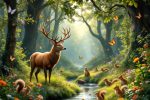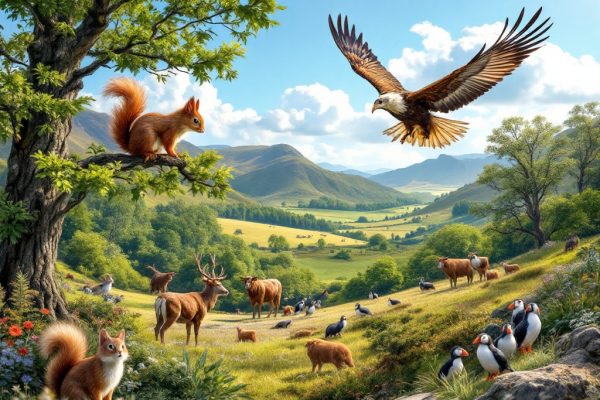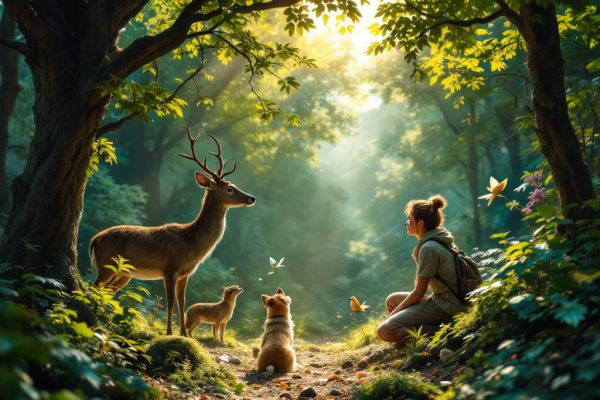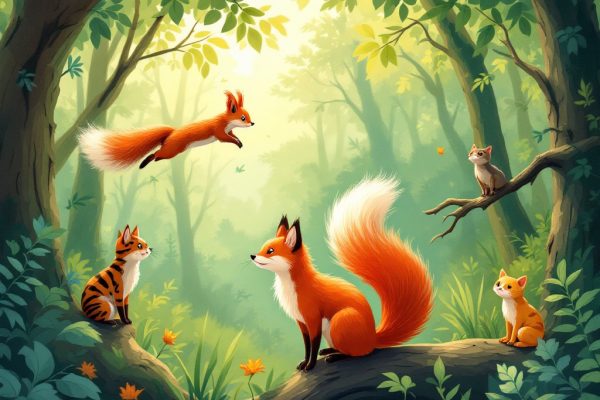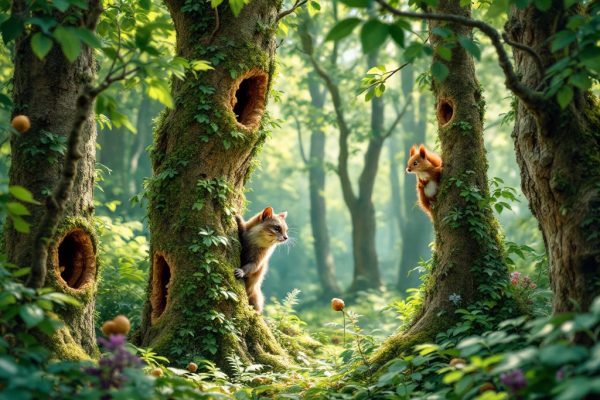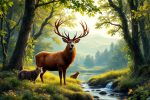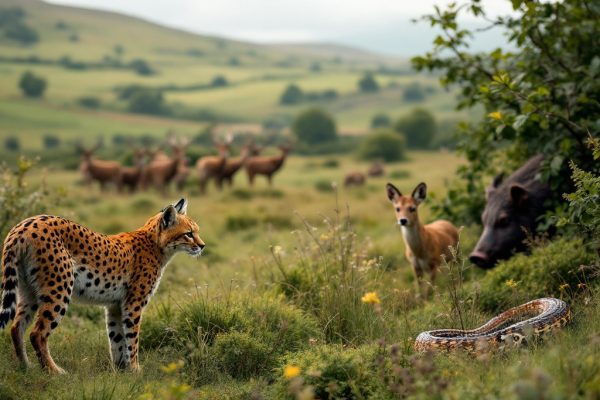Lothian Wild Animals that Look like Dogs
Discover the fascinating world of dog-like animals inhabiting Lothian and beyond! From the familiar red fox to the exotic dhole, this exploration delves into the unique characteristics, behaviors, and conservation statuses of various canids. Learn about the vital role of apex predators like wolves, the adaptability of coyotes, and the intriguing social structures of jackals and dholes. Uncover the surprising dog-like features of the Scottish wildcat and the peculiar habits of the bush dog. Explore the rich folklore surrounding the tanuki and the critical conservation efforts needed to protect endangered species. Embark on this journey to deepen your understanding of these remarkable creatures and their place in the natural world.
Important information
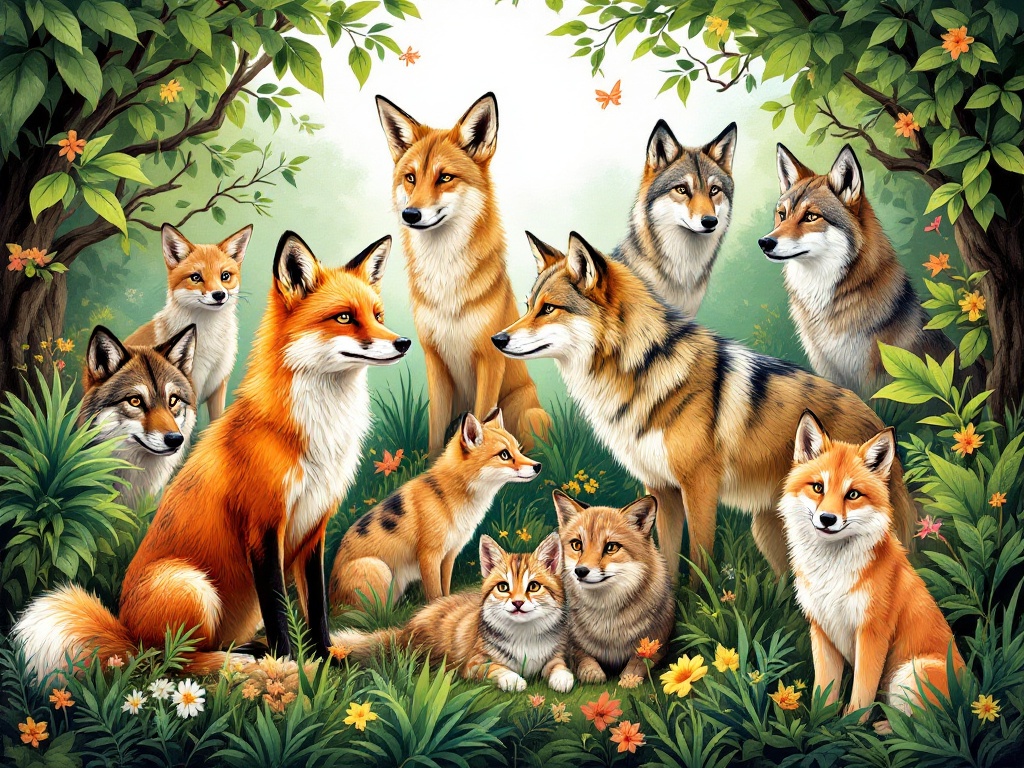
- The red fox is the main wild dog-like animal in Lothian.
- Scottish wildcats, though felines, have a dog-like appearance.
- Dholes, endangered canids, are known for pack hunting and unique molars.
- Tanuki, native to East Asia, are canids that can hibernate.
- Bush dogs have a unique habit of handstand urination to mark territory.
Species of Wild Animals Resembling Dogs in Lothian
Lothian’s primary wild canid is the red fox. While Scottish wildcats are felines, their robust build gives them a somewhat dog-like appearance. Occasionally, the lynx, with its own canine-like characteristics, can be spotted. Hybrid and feral dogs add to this mix, generally found in the countryside.
Wolf: The Apex Predator
Wolves are apex predators, sitting at the top of the food chain. Their pack-oriented social structure is essential for hunting large prey. This predatory behavior helps balance the ecosystem by regulating prey animal populations, such as deer and elk, which prevents overgrazing and maintains plant diversity. However, this vital role sometimes leads to conflict with humans, especially when livestock are targeted.
Coyote: Versatility in Various Habitats
Coyotes, adaptable members of the dog family, are native to North America and close relatives of wolves. They thrive in diverse habitats and typically reach heights of 32 to 37 inches. Despite their adaptability, their lifespan in the wild is a relatively short 13 to 15 years.
Fox: Common Traits and Variations
Foxes and dogs, belonging to the Canidae family, share a noticeable resemblance. Lothian’s red foxes, for example, possess the characteristic pointed ears, narrow snout, and renowned bushy tail seen in their canine relatives. Their slender physique enables them to move effortlessly through their environment. Their reddish-brown fur, frequently complemented by a white underbelly, offers exceptional camouflage. These astute animals are both inquisitive and cautious, often pausing to evaluate their surroundings before proceeding. This careful blend of curiosity and wariness is essential for their survival.
Jackal: Behavior and Ecology
Jackals are medium-sized mammals related to wolves and coyotes. They are omnivorous scavengers, playing a crucial role in controlling prey populations. These fascinating creatures are also known for their distinctive calls and complex social structures.
Dhole: Endangered Pack Hunters
Dholes, endangered canids found across Central, South, and Southeast Asia, live in large clans known for their cooperative hunting. Their primary prey consists of ungulates. However, their survival faces numerous threats, including habitat loss and competition with larger predators like tigers and leopards. Human-wildlife conflict further exacerbates their vulnerable status. Physically, dholes are distinguished by their reddish-brown coats, wide skulls, and specialized molars perfectly adapted for efficiently consuming prey.
Bush Dog: Lesser-Known Canid
Bush dogs, found from Panama to southern Brazil, are unique canids with short legs and bushy tails. These small creatures have a distinctive rounded muzzle. They also have a peculiar habit: marking their territory with a handstand while urinating.
Tanuki (Raccoon Dog): Cultural Significance and Biology
The tanuki, native to East Asia, is a unique canid species, sometimes mistakenly called a raccoon dog. While resembling both raccoons and dogs, it belongs to neither group. Famous in Japanese folklore, tanuki are often portrayed as mischievous shape-shifters, their large scrotums symbolically linked to prosperity. These adaptable omnivores thrive in various habitats, from forests to urban environments. A unique characteristic among canids is their ability to hibernate. Their distinctive facial markings, similar to a raccoon’s mask, make them easily recognizable.
Key Characteristics of Dhole and Other Dog-Like Animals
Dholes possess distinctive reddish-brown coats that shift with the seasons, complemented by a broad skull and shortened snout. Their specialized molars are ideally suited for shearing prey.
Scottish wildcats, while felines, exhibit surprisingly canine-like characteristics, such as a robust build, bushy tail, and stealthy hunting style. Their social behaviors and body language can even mimic those of dogs.
- African wild dogs,
- albino and regular tanuki (raccoon dogs),
- Australian dingoes,
- bush dogs,
- coyotes,
- foxes,
- jackals,
- short-eared dogs,
- wolves, each possessing its own unique qualities.
Hunting Strategies:
- Dholes: pack hunting.
- Scottish wildcats: solitary.
- Wolves: structured packs with defined hierarchies.
- Coyotes: solitary or small groups.
- Foxes: solitary.
- Jackals: solitary or pairs.
- Bush dogs: small packs.
- Tanuki: primarily solitary foragers.
Conservation Status:
- Dholes: endangered.
- Scottish wildcats: critically endangered.
- Wolves: varies by location.
- Coyotes: not a conservation concern.
- Foxes: widespread and adaptable.
- Jackals: not currently endangered.
- Bush dogs: near threatened.
- Tanuki: stable populations.
Physical and Anatomical Features
Dholes have a uniquely convex skull and striking reddish-brown fur. Their most distinguishing feature is their dentition: unlike other canids, they have only two lower molars. This characteristic makes identification remarkably easy.
Social Structure and Hunting Techniques
Dholes are highly social animals, living in large clans which can sometimes include more than 40 members. Unlike the stricter hierarchy of wolves, dhole clans often have several breeding females. These diurnal hunters mainly target medium to large ungulates, using cooperative strategies like chasing prey into water to hinder escape. Their hunts are often preceded by elaborate rituals, a key element of their coordinated social hunting behavior.
Conservation Status and Threats
The dhole, a vibrant and social canid, faces a grave danger: extinction. Recognized as endangered by the International Union for Conservation of Nature (IUCN), this unique species struggles against habitat loss and competition from larger predators such as tigers and leopards. These combined pressures have led to dwindling dhole populations, making conservation efforts essential for their survival.


